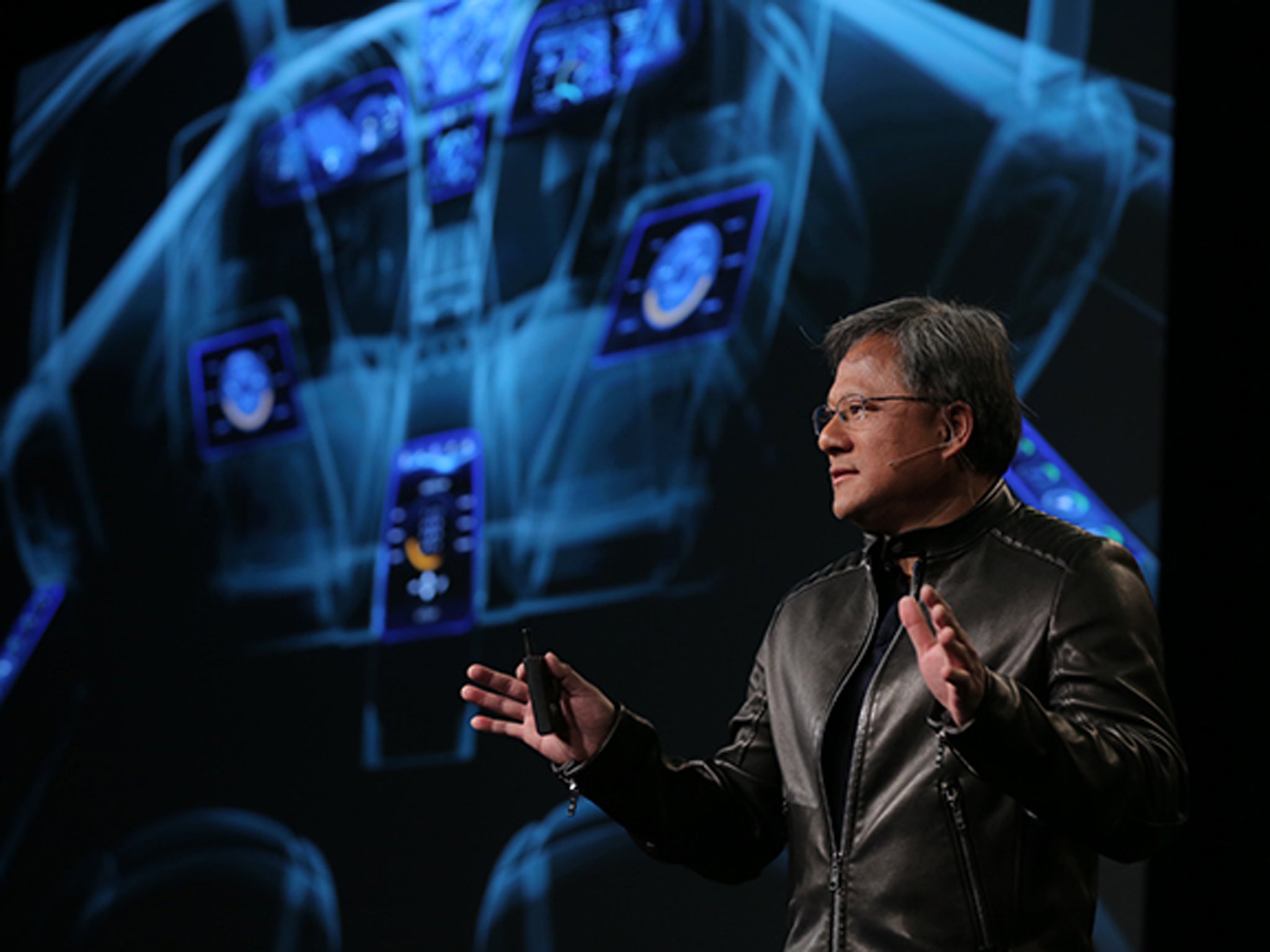CES 2015: Nvidia launches Tegra X1 supercomputer chip that can fit in a mobile phone and could power self-driving cars
Chip built onto Nvidia's in-car supercomputer, allowing it to understand its environment while driving through cities

Your support helps us to tell the story
This election is still a dead heat, according to most polls. In a fight with such wafer-thin margins, we need reporters on the ground talking to the people Trump and Harris are courting. Your support allows us to keep sending journalists to the story.
The Independent is trusted by 27 million Americans from across the entire political spectrum every month. Unlike many other quality news outlets, we choose not to lock you out of our reporting and analysis with paywalls. But quality journalism must still be paid for.
Help us keep bring these critical stories to light. Your support makes all the difference.
Chipmaker Nvidia has unveiled its Tegra X1, a mobile phone chip more powerful than those in most computers.
The new chip uses a tenth of the power of leading desktop computer chips and is “in many respects more powerful”, Nvidia said when it launched it at the Consumer Electronics Show in Las Vegas yesterday.
The chips could be used to power the self-driving cars of the future. Two of the chips built in to a car would be able to recognise 75 objects at the same time, the company said, helping the car to understand its environment.
That will help Nvidia built its Drive PX, a platform that will allow companies to build self-driving cars using the chip. That supercomputer is about the size of a sheet of paper, and includes two of the Tegra X1 chips.
The power of the chip means that it can recognise road signs from a long way off, and can power detectors that will be able to study how light reflects off certain objects and judges how far away and what they are.
It will also allow the computer to be able to learn as it is used. The platform uses a “deep neural network”, which allows the computer to learn like a human does.
It took about 16 hours for the platform to first learn to identify different kinds of cars — such as trucks, vans and saloons — but now it can make much finer judgements, recognising pedestrians, cars and animals, as well as the lights of a flashing police car in the rear view mirror. In the same way, the computer can now differentiate between the different colours of traffic lights.
Connected cars are set to dominate the Consumer Electronics Show, with many car firms presenting at the show and expected to demonstrate internet enabled vehicles.
Join our commenting forum
Join thought-provoking conversations, follow other Independent readers and see their replies
Comments